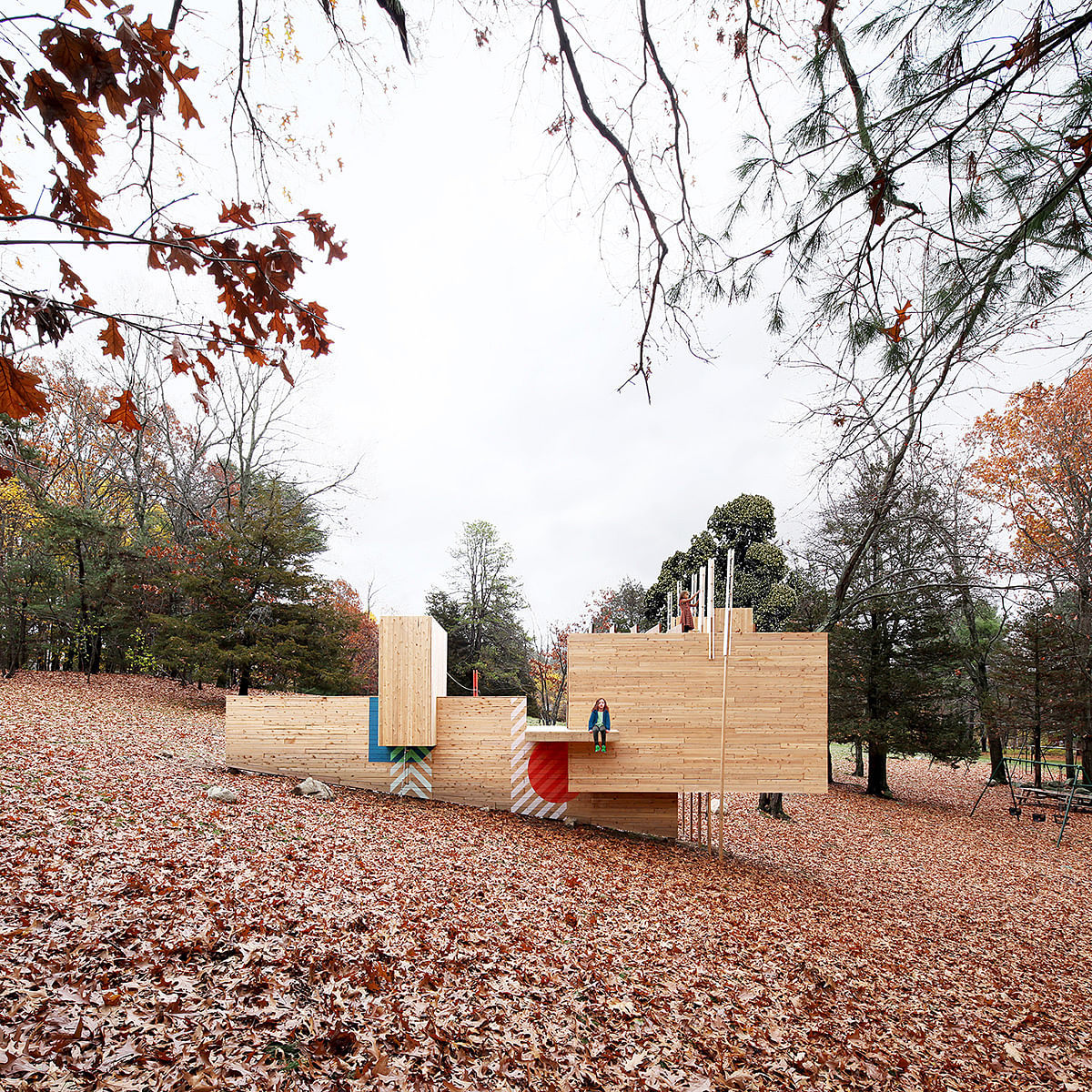
Matter Design + FR|SCH Projects' “Five Fields Play Structure” reshapes the concept of play
By Justine Testado|
Friday, Aug 4, 2017
Related
Located on a slope within the TAC-designed Five Fields neighborhood, the “Five Fields Play Structure” reflects the communal spirit of its historic site in Lexington, Massachusetts. Matter Design and FR|SCH Projects shunned function and standard in designing the Play Structure, and instead wanted to create a welcoming space that inspires imagination — and perhaps childhood nostalgia — for visitors of any age.
In recent months the project has garnered attention in architecture awards competitions, such as the 2017 AZ Awards in the Recreational Architecture category.
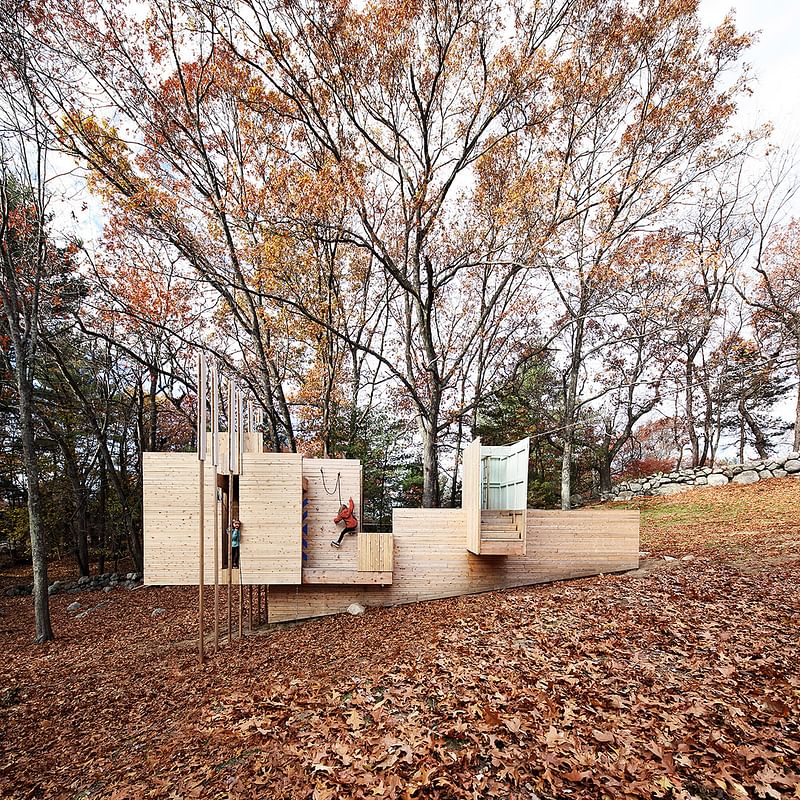
The Architects Collaborative (TAC) designed and developed the experimental Five Fields neighborhood in the early 1950s, seeking to foster community through the creation of shared, common land. Over the decades, the community continues to care and respect the land.
In designing the Five Fields Play Structure, Matter Design and FR|SCH Projects wanted to pay homage to the neighborhood's innovative communal spirit, while also resisting literal and singular readings for projects of this type.
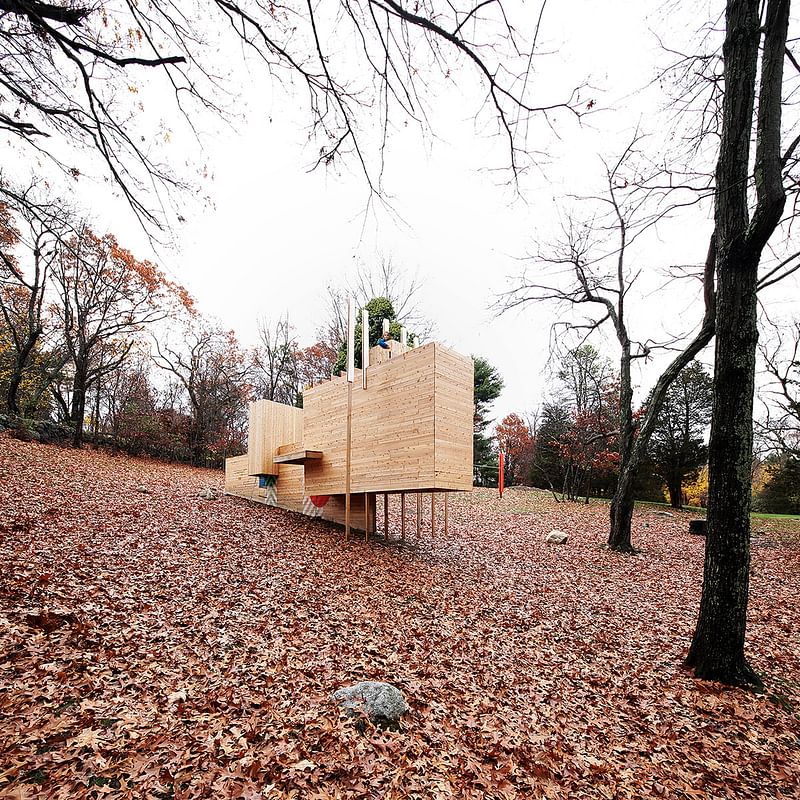
Based on Matter Design's notion that “play is neither standard nor strictly functional”, the structure liberates visitors from a specific directive use. In other words, every person will have their own way of interacting with the structure.
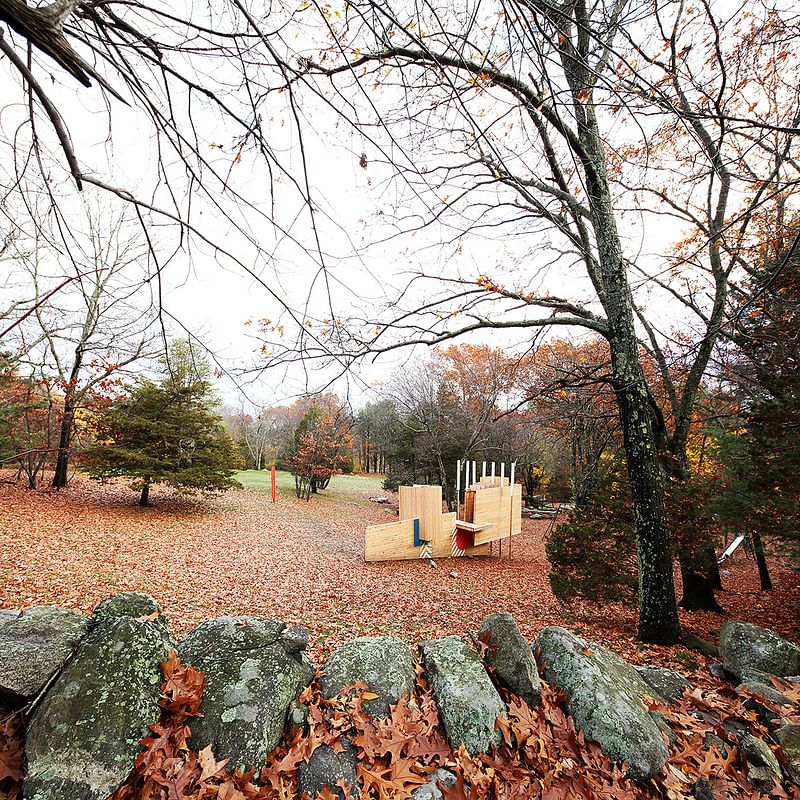
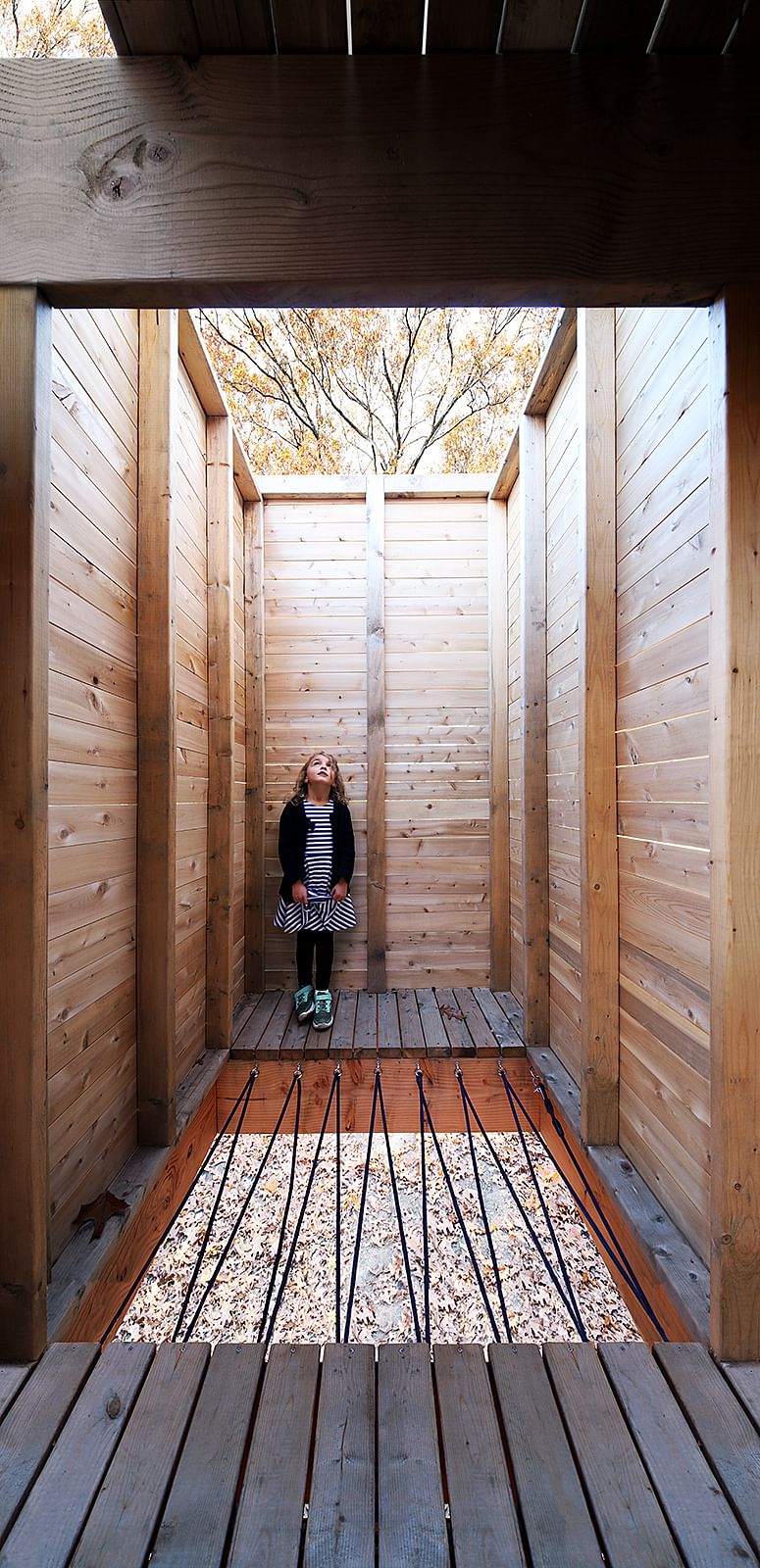
The Five Fields Play Structure invites kids to use their imaginations as they discover its unfolding spaces. Although the structure is primarily designed for children, it invites older users to reminisce on their childhood and maybe even rediscover the joys of child's play.
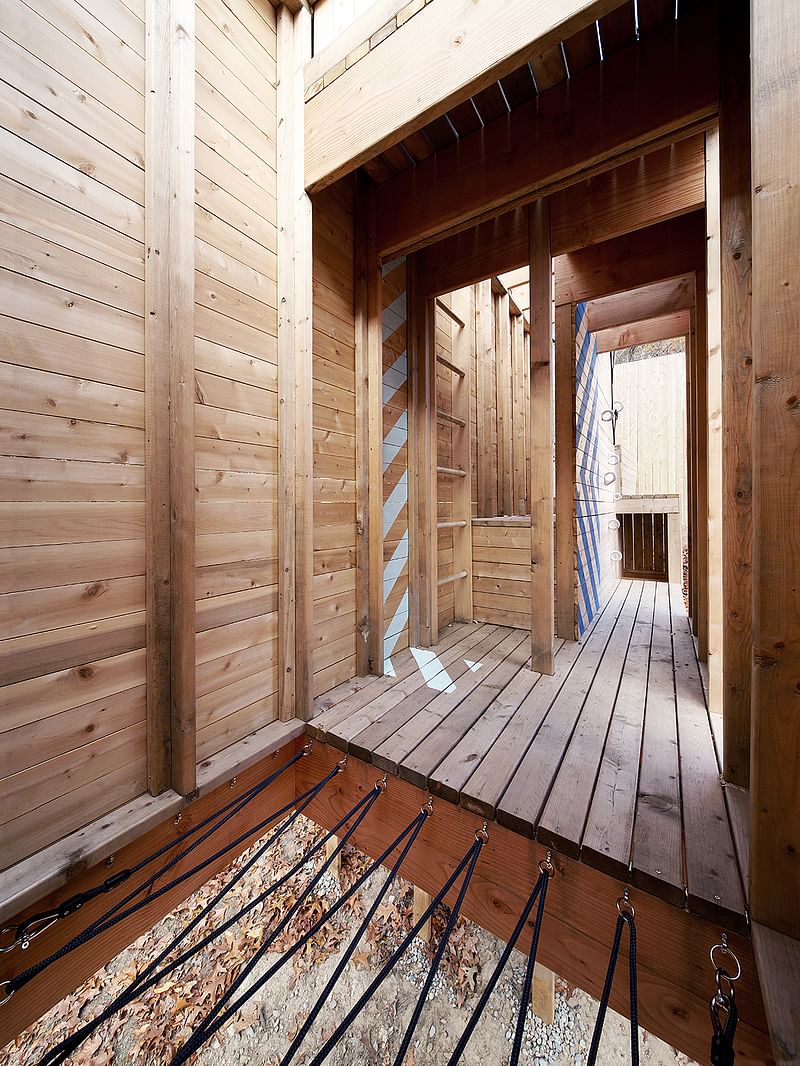

The 115 square-foot timber structure is 36' long, 18' tall, 4' wide, and includes a 66' zipline. Simple colorful graphics suggest entries and moments of use without overtly labeling them as such. Elements like doors and stairs exist, but actually lead to nowhere. Hidden thresholds are tucked underneath levitating volumes that balance on a wall.

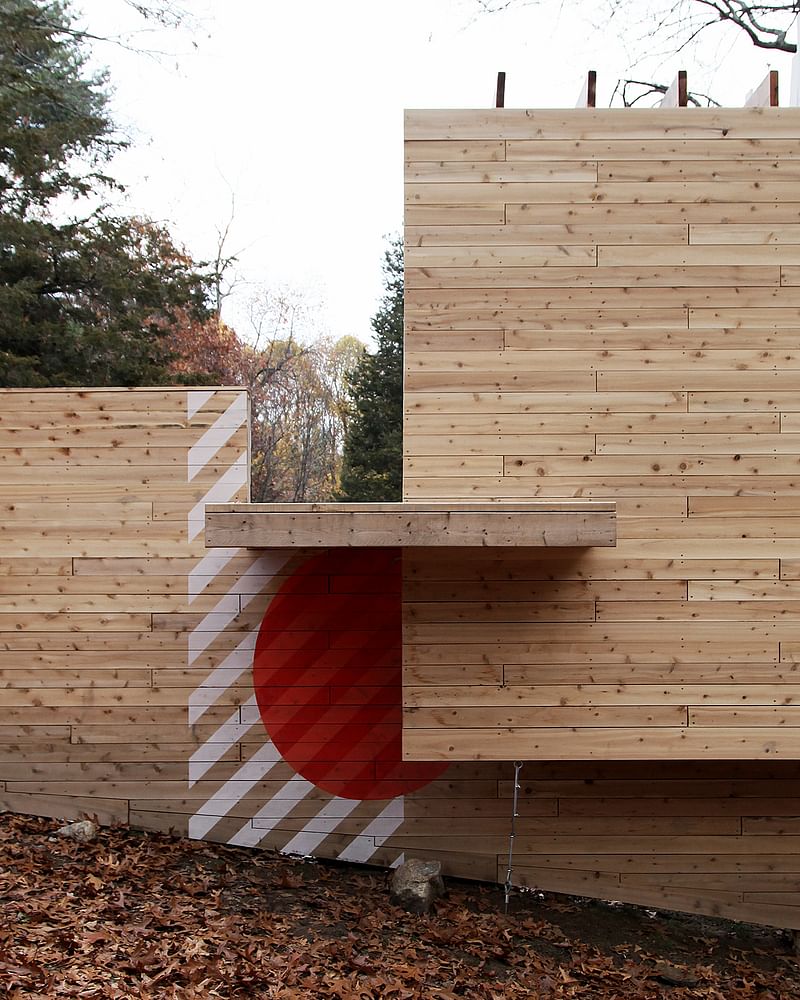
The playscape is an unfolding structure of views, movements, and spaces. “The intent is to not ask what the structure does, but how it imagines new possibilities.”
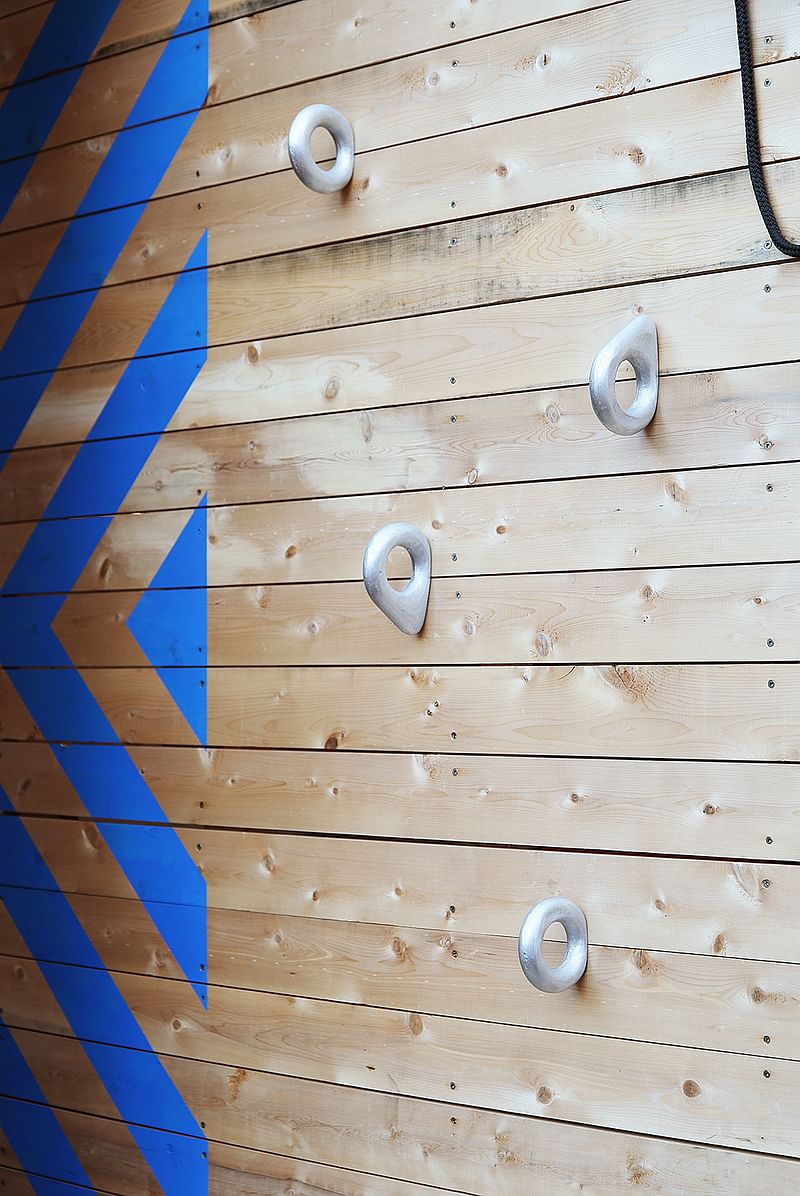

RELATED NEWS Six winning "Playsages" for the 2017 International Garden Festival in Reford Gardens

RELATED NEWS Flashback: 2017 Festival des Architectures Vives designers interpret “Emotion” in these interactive installations


Share
0 Comments
Comment as :